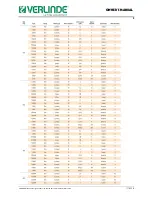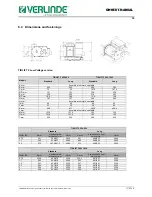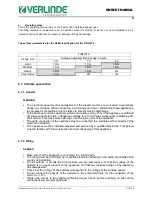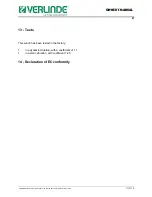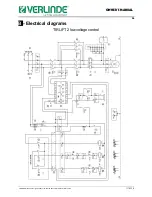
OWNER’S MANUAL
22
VERLINDE reserves the right to alter or amend the above information without notice
11/2018
The first layer must be wound in a compact manner and under tension. Take a mallet or a block of
wood and knock the turns against one another; not too hard to prevent the strands from overlapping
one another, but tightly enough to prevent the rope from moving on the drum. If the first layer is
wound too loose, the next layer will form a space in the first layer that will result in an open area. If
the first layer is too tight, the subsequent layers will not have enough space between turns.
In any case, the first layer and all the other layers must be wound onto the drum with enough pre-
tension (5-10 % of the MWL of the rope). If the rope is wound without any tension, it will suffer from
crushing and premature flattening caused by the loaded upper layers.
Even if the first layer is wound correctly during installation, it will expand a little while in service. When
the first layer expands (loss of pre-tension) the initial procedure MUST be performed at regular
intervals.
Otherwise, the "hard" turns will severely crush the base layers.
Whatever you do, DO NOT pass the rope through a clamping mechanism. For example, two blocks
of wood screwed together.
THIS WILL CAUSE IRREPARABLE DAMAGE TO THE ROPE!
It is important
to respect the indication below; if the rope start on the winch is at the bottom, respect
the same principle. Failure to respect this precaution will damage your rope irretrievably and it will
become extremely dangerous.
It is important to respect the "natural" winding direction of the rope (the direction of manufacture and
storage) otherwise it risks of considerably reducing its service life.
Check the direction of rope winding according to the motor connection.


